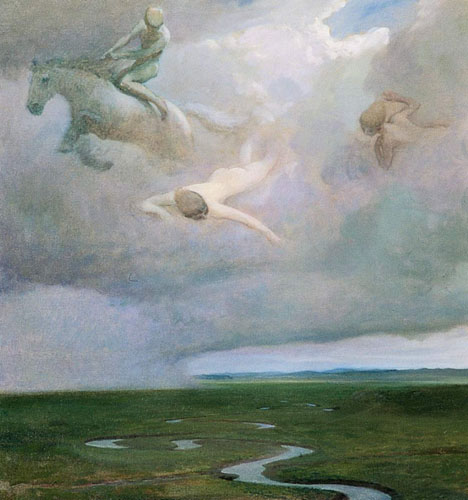![]()
The mission of the Steppe Conservancy is to preserve the biodiversity of Northern China by protecting the topsoil, grass, and animals as well as the indigenous communities of the Northern Steppes.
The essential concepts and data analysis of Inner Mongolia's Steppes
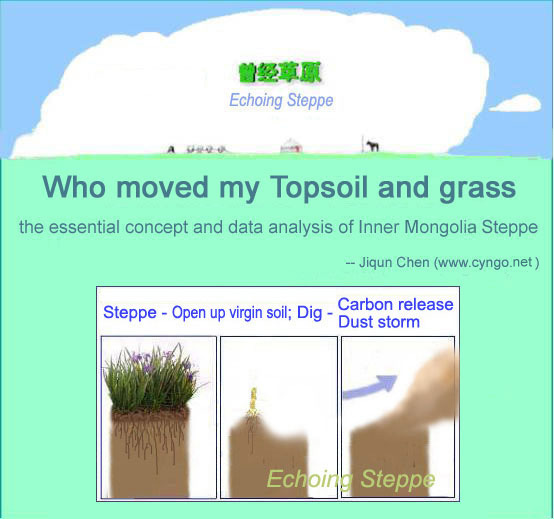
Steppe:
Level, grassy treeless plain, especially
in SE Europe and Central
Asia.( from <Oxford Advanced Dictionary of Current English>)
We organized experts to inspect
the diversity of typical steppe plants at Eastern Uzemchin County (Wuzhumuqin
Qi in Chinese) (2005)
The current situation of Inner Mongolia's Steppes
Inner Mongolia comprises an area of 1,120,000km2 and supports a population of around 23 million. Of these, around 10 million are engaged in agriculture, including 3 of the 4 million Mongolians present. These farmers have thus transformed former steppes into farmland. Agriculture has become the main mode of production only in the last one hundred years, rapidly replacing herding.

The
transformation of Inner Mongolia Steppes into agricultural land has
rapidly degraded the quality of the land, leading to widespread
desertification. Nonetheless, some media and government
officials in charge of managing the grasslands claim there are 860,000 km2 natural grasslands in Inner Mongolia.
( http://www.nmagri.gov.cn/news/about.asp?id=35226)
According to one government official, almost the entire area of Inner Mongolia other than Alsha Aimag county (270,000 km2) is still "natural grassland”. Is it possible that Inner Mongolia still has 860,000km2 of grasslands?
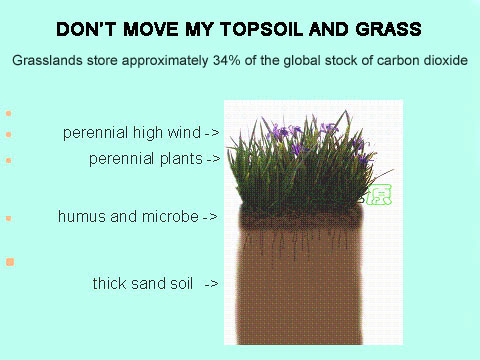
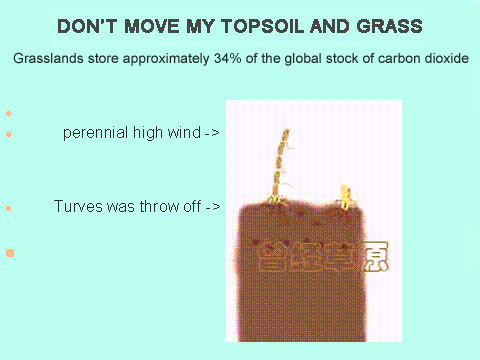
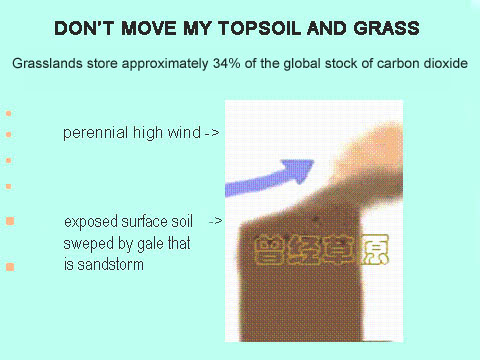
The historical experience already proved
that nomadic style is the best mode of producing which can protect the
environment in very harsh environment grassland areas. Agriculture is
the mode of producing that ruins the grassland most rapidly, but over
many years, many peoples have been disregarded this basic experience
from Mongolian, and then a large amount of grassland has been
reclaimed, which leading to the irreversible degradation of the
grassland and today’s
deserts and sand-dust storms.
1、Nomadic
producing mode and life style can minish the stress
on the grassland,
but not in the case of resident style.
2、Nomadic
style can fertilize the grassland evenly, but not in
the case of
resident style.
3、Nomadic
style doesn’t destroy the structure of soil, doesn’t
make land naked
and make land deserting, but not in case of
agriculture,
especially during windy spring, there is no crops
covering the
surface of the land, so it is easy to cause and
increase secondary
sand dust.
4、Nomadic
style can save water resources, but not in the case
of agriculture.
Industry
development ruined the grassland
vegetation. Especially the predatory
developments led to the drought of grasslands and
vanishing of wetlands. The rivers interception by
Olagai(wulagai
in Chinese)
Reservoir impacts
directly the existence of the national important
wetland.
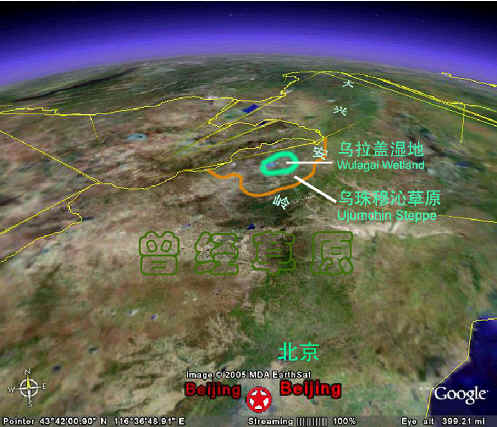
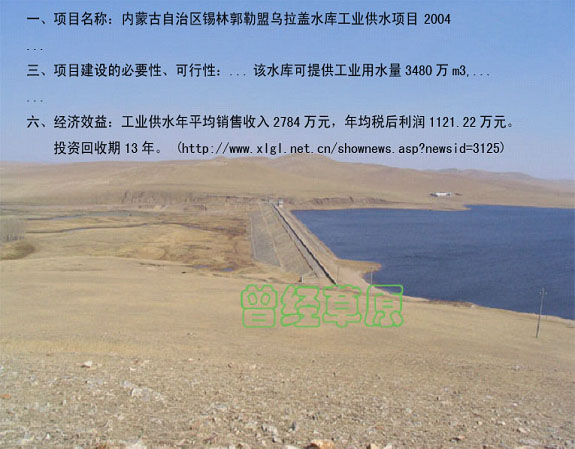
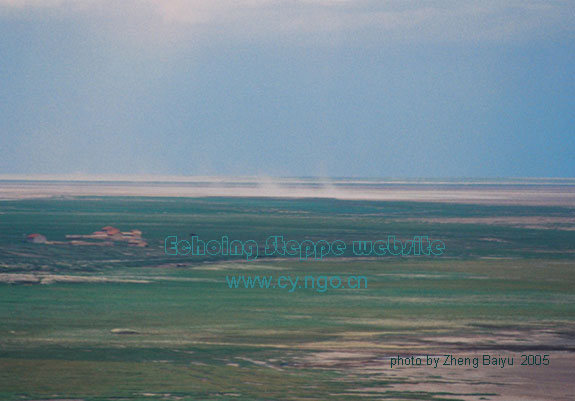
Since 2000, “Echoing Steppe” website began to pay attention to the ecosystem of the remaining grassland and the protection of the traditional nomadic culture. We wish that we can protect the remaining grassland through laws, and provide a frame of reference for the works of prevention and cure of the deserting .

We wish that through the laws popularization in Mongolian language and establishment of internet information stations, herders can know the ‘collective land ownership’ endowed by laws, know the approachs to apply for the certificates, so they can protect their own homesteads, the nomadic culture and the right to choose their own life style through the laws,and then the contrived invasions and occupations of the grasslands are expected to be stayed, poverty and ecosystem worsen as a result of grassland degradation can be avoided.

During
2001-2006,we
planed and published Mongolian language laws
books for 9 volumes, 50,000 books totally, and we organized volunteers
and have already dispersed over 30,000 books among herders of Uzemchin
and Hulunbeir grasslands
(Wuzhumuqin and
Hulunbeier in Chinese).

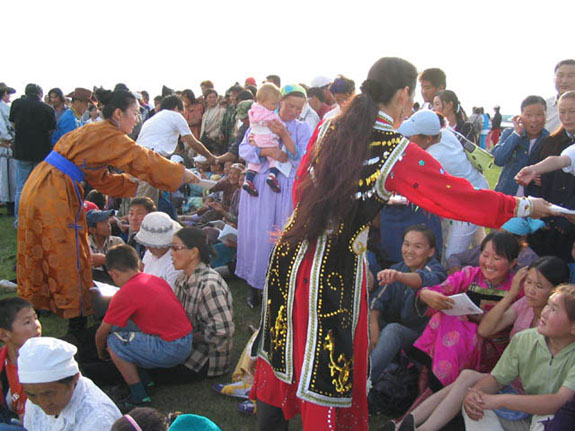
internet information stations for Herders at Eastern Uzemchin county (wuzhumuqin Qi in Chinese) were established with the help of our committee, and one term of computer and internet training course which 16 herders and gachan darog (gacha zhang in Chinese)attended was held successfully(Nov. 2005).
Future’s jobs---laws popularization and the validation of land ownership:
The Constitution ordains that China implements public ownership of means of production, that is, ownership by the whole people and by collective.
The lands in rural areas is owned by collectives, except the lands owned by the state.
To provide supports for herders to apply the ‘Collective Land Ownership Certificate’, so far herders of Eastern Uzemchin County ( Wuzhumuqin qi in Chinese) have applied and obtained 10 certificates.
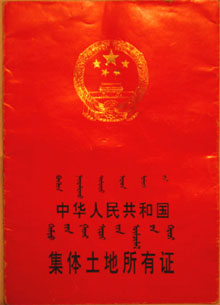 |
 |
 |
Right guarding through the laws.
As herders of Mandal Bulag (man du bao la ge in Chinese)checked the amount of acres of their pasture according to their Collective Land Ownership Certificate, they found that 900,000 MU( Chinese unit of area, 1 acre = 6.070 mu) of their pasture had already been leased to several ecdemic companies by the unknown illegally.
We
even found that this 900,000 mu ( 60,000 sq km ) of collective
grassland have already been marked out to other organizations in the
map published by China Cartographic Publishing House (SinoMaps
Press)(2005 version).
http://cnsteppe.com/map_madu_2005mappublishinghouse.htm
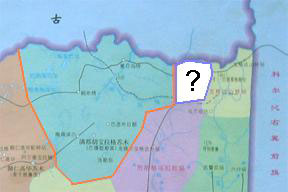 |
Question live:
Whom the Steppe is belonged to?
Who moved my Topsoil and grass?
